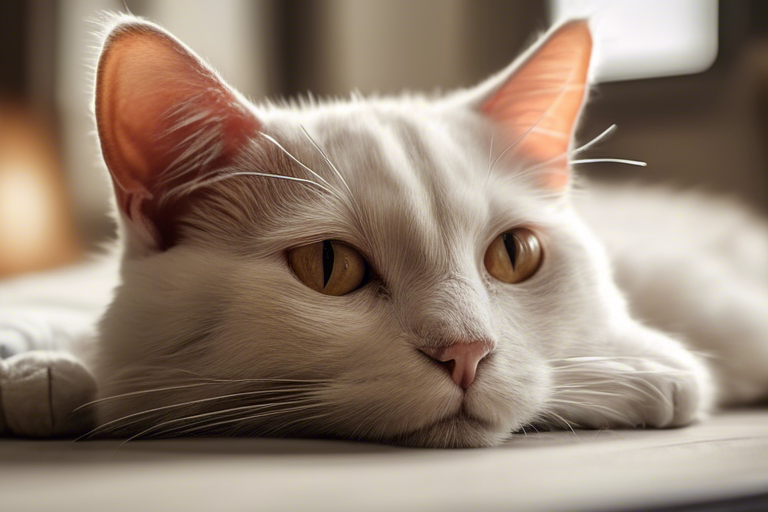Introduction
As a cat owner, one of the most challenging decisions you may face is whether or not to euthanize a cat with feline leukemia (FeLV). Feline leukemia is a viral infection that affects a cat’s immune system and bone marrow. It can lead to various symptoms and ultimately be fatal. Euthanasia is a deeply personal decision that should be made with careful consideration and consultation with a veterinarian. In this comprehensive guide, we will explore the signs, symptoms, and factors to consider when determining if euthanasia is the right choice for a cat with advanced FeLV.
Understanding Feline Leukemia
Feline leukemia virus (FeLV) is transmitted through bodily fluids such as saliva, urine, and feces. It can be spread through direct contact with an infected cat, such as bites or sharing food and water bowls. Kittens can also be born with FeLV if their mother is infected. Outdoor cats are more susceptible to FeLV due to increased exposure to infected cats, while indoor cats can still contract the virus if they come into contact with an infected cat or have an infected mother.
FeLV can cause a range of symptoms, including anemia, fever, lethargy, weight loss, and respiratory issues. While there is no cure for FeLV, treatments can help manage symptoms and prolong a cat’s life. Regular veterinary check-ups and vaccinations are crucial in detecting FeLV early and preventing its spread.
Signs That Euthanasia May be Considered
- Poor Quality of Life: If your cat is no longer able to engage in activities they once enjoyed, such as playing, eating, or interacting with others, their quality of life may be significantly diminished. Keeping a daily log of your cat’s well-being can help you assess if their bad days outnumber the good ones.”Most vets agree it is better to humanely euthanize a leukemia positive cat and not to have it die of the illness.” – Ryan Epple, owner of Harmony Animal Hospital.
- Lack of Appetite: A lack of appetite is often one of the first signs that a cat’s health is declining. While some cats may respond to appetite stimulants or alternative food options, others may not regain their appetite due to the underlying disease.
- Difficulty Breathing: Cats with advanced FeLV may experience difficulty breathing, which can be a sign of pulmonary edema or fluid buildup in the lungs. This can lead to further health complications and a decline in their overall well-being.
- Other Physical Signs: Cats with advanced FeLV may exhibit a worsening of their symptoms despite ongoing treatment. Medications may become less effective, resulting in increased pain, weakness, poor hygiene, or incontinence.
- Changes in Behavior: Cats may display sudden changes in behavior, such as hiding, becoming aggressive, or displaying fearful behavior. These behavioral changes can indicate that their health is deteriorating.
- Signs of Cancer: FeLV-positive cats are more prone to developing certain types of cancer. Symptoms such as trouble urinating, drooling, difficulty eating, aggression, or difficulty defecating may indicate the presence of cancer and the toll it is taking on the cat’s overall health.
- Exposure to Rabies: If a FeLV-positive cat has been bitten by a rabid animal, euthanasia may be necessary due to the risk of transmitting rabies. State laws and consultation with a veterinarian are crucial in such cases.
- Severe Injuries: In cases where a cat has suffered severe traumatic injuries, such as being hit by a car or attacked by another animal, euthanasia may be the kindest decision if the cat’s survival outlook is bleak.

Image Source: Unsplash
Making the Difficult Decision
Deciding to euthanize a cat with advanced FeLV is a deeply personal choice. It is essential to consider the cat’s quality of life, the progression of the disease, and the potential impact on other cats in the household. Consulting with a veterinarian is crucial in understanding the available options and making an informed decision.
“The decision to euthanize a cat with FELV is a personal one that should be made with careful consideration. While there are treatments available that can help manage symptoms, there is no cure for FELV. As the disease progresses, a cat’s quality of life may deteriorate to the point where euthanasia is the most humane option.” – Reference Article 5
It is important to acknowledge that euthanasia is not the only option for all cats with FeLV. Some cats can live happy and comfortable lives with proper care and management. Regular veterinary check-ups, a healthy diet, and a stress-free environment can significantly improve their well-being.
Seeking Support and Second Opinions
If you find yourself uncertain about the decision to euthanize your cat with FeLV, it is crucial to seek support from your veterinarian, friends, and family. They can provide emotional support during this challenging time and help you explore all available options. Additionally, seeking a second opinion from another veterinarian can offer different perspectives and insights into your cat’s condition.
The Euthanasia Process
Euthanasia is a process that should be carried out with compassion and care. The procedure is usually performed by a veterinarian in their office. It involves sedating the cat and then administering a lethal injection, which provides a peaceful passing for the cat. Many veterinarians encourage pet owners to be present during the procedure to provide comfort and support to their beloved companion.
Coping with Loss
After your cat has passed, it is important to decide what to do with their body. Many veterinarians offer cremation services, allowing you to choose between private or communal cremation. Some veterinary clinics may also provide mementos such as hair clippings or paw prints to remember your beloved pet.
Grieving is a natural process, and it is essential to give yourself time to mourn the loss of your cat. Reach out to friends, family, or support groups who can offer understanding and comfort during this difficult time.
Conclusion
Deciding when to euthanize a cat with Feline Leukemia Virus (FeLV) is never easy. It requires careful consideration of the cat’s quality of life, symptoms, and potential impact on other cats. While there are treatments available for FeLV, the progressive nature of the disease may eventually lead to a decline in the cat’s well-being. Ultimately, the decision to euthanize should prioritize the cat’s comfort and quality of life.
Remember, you are not alone during this difficult time. Consult with your veterinarian, seek support from loved ones, and make an informed decision based on the best interests of your beloved feline companion.






